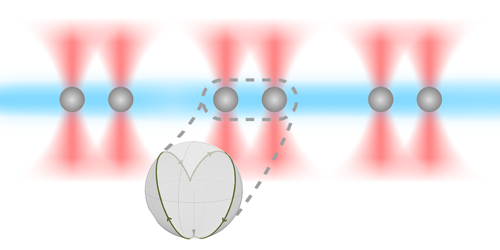Neutral-Atom Quantum Computers Are Back in the Race
In the race to build the first, useful, large-scale quantum computer, researchers are exploring many different routes, each with their own strengths and limitations. Approaches that use neutral atoms offer a scalable system, but the consistency of atom interactions—their quantum fidelity—lags behind that of other architectures. Now, building on recent improvements in controlling atoms in highly excited “Rydberg” states, Harry Levine at Harvard University and colleagues have demonstrated a neutral-atom quantum computer that achieves fidelities rivaling its highest-performing competitors.
The team performed quantum logic operations on clusters of two or three closely spaced rubidium atoms held individually in optical tweezers. The atoms became entangled when one of them was excited by a laser into a Rydberg state—a state where the outermost electron is highly energized. This transition also prevented the atom’s neighbors from being excited at the same time, a situation that is essential for creating logic gates comprising two and even three quantum bits (qubits). The ability to host multiqubit gates indicates that this platform may be especially efficient at implementing certain quantum algorithms.
So far, Levine and colleagues have manipulated a row of five two-atom clusters simultaneously, but they see no barriers to expanding the setup to create 2D lattices of dozens or even hundreds of qubits. (Another group, for example, has experimented with a square array of neutral-atom qubits.) In this configuration, lasers would pick out two or three adjacent atoms to implement high-fidelity, two- or three-qubit gates as required.
This research is published in Physical Review Letters.
–Marric Stephens
Marric Stephens is a freelance science writer based in Bristol, UK.





